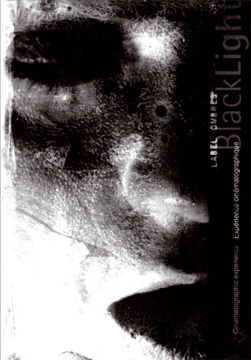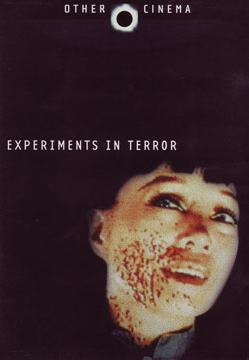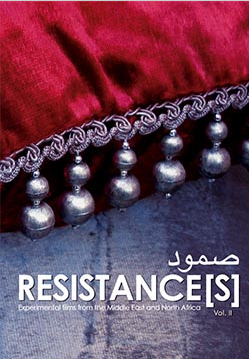Issue 1/2010 - Net section
Good Vibrations
The French DVD label Lowave takes itself to the edges of Film culture
At the source: to the delight of film lovers, we are currently witnessing an explosion in creative energy and production in contemporary film. Historians know that recounting the entire history of moving images is no longer possible, unless we renounce once and for all the principle of acknowledging the entire corpus of filmmaking.
At the receiving end: screening venues are spread all over the place. Movie theatres are no longer dominant. Moving images infiltrate wherever they can: in galleries, museums, homes, streets, every kind of space, both public and private, including the virtual space of the Internet.
So we’re faced with a reason to celebrate, plus two problems: cinephiles feel the need to breathe within this ocean of images; artists find it increasingly difficult to gain recognition beyond their own informal networks. There is a lack of professionals who are capable of discerning, defending, exposing and preserving film as art. This is where the DVD label, Lowave, through its remarkable work of discovering, publishing, and promoting new talent, gains its importance and pertinence. Created in 2001 in Paris, France by American Marc Horchler and German Silke Schmickl, Lowave is truly international. Its exemplary activity as a video publisher has included artists from many backgrounds, working with different techniques (film and digital video) and multiple modes of expression, from abstract experimental films to militant documentaries. Alongside historical figures such as Maurice Lemaître (a French Lettrist artist and filmmaker, assistant to Isidore Isou), Taka Iimura (a Japanese video pioneer), and Helga Fanderl (a German master of Super-8), Lowave has promoted some of the most important young artists from around the world, including China, South Africa, Iraq, Finland, and Palestine. Among these, the most notable include the Norwegian HC Gilje, the Moroccan Mounir Fatmi, and the Frenchwoman Johanna Vaude. But there are also entire new worlds of images to discover: »Re:Frame - Scanning Time / Documenting Change« is the very first selection of the most audacious contemporary visual proposals in India: using documentary, animation or fiction, the artists investigate the meanings and the echoes of contradictory signs of Indian accelerated development.
Lowave presents us with a summary of the fascinating and vibrant world of contemporary artistic creation. Their catalogue includes video artists (Pierre-Yves Cruaud, searching for informatic visual forms), filmmakers (Francoise Romand, a specialist in singular comedy), contemporary artists (the radical political Malachi Farrell), performance and installation artists (the Indian feminist Pushpamala N), photographers (Taysir Batniji and his superbly melancholic work), media practitioners (the Raqs Media Collective and its critical poetry) and audiovisual artists (Rodolphe Burger, a famous French musician and singer). To the delight of researchers, the range of new styles and approaches covered continues to expand from the numeric artist Hugo Verlinde’s sensual algorithmic cinema to Zoulikha Bouabdellah’s incisive and celebratory satire.
The Lowave DVD catalogue includes different types of video publications: monographic or polygraphic, such as the DVD series »Different Cinema«, made in collaboration with the »Collectif Jeune Cinéma«. It’s one of the oldest experimental film co-ops in France, whose co-founders include the film curator Marcel Mazé and the film critic Raphaël Bassan. In this series of 3 volumes, one can find Marguerite Duras travelling alongside two generations of European experimental filmmakers. With their series »Resistance(s)«, Silke Schmickl and the musician Christine Sehnaoui have accomplished a major achievement by giving avant-garde Arab filmmakers - from an ignored yet vast field of contemporary art - the recognition that they deserve (and there’s an urgent need to have these voices heard). Some of the most important political and artistic films of this decade can be found on »Resistance(s)« including those by Jayce Salloum, Nassim Amaouche, Pauline M’Barek, Katia Kameli and of course the theoretician and video maker Jalal Toufic, still under-acknowledged in Europe.
The important »artists at work« series aims to document the creation of installation and performance art within public spaces: Felice Varini, Laurent Pariente and Malachi Farrell are among the first artists to be included since 2007. By raising awareness of the production process, Lowave is including the ephemeral within the art record, invaluable to both curators and historians. It is increasingly taking on the role of curator for specific programmes across the world, allowing its director, Silke Schmickl, to weave recent works published by the label with older references, in order to establish visual echoes between classical and contemporary artists, film and video, established approaches and recent breakthroughs in performing, musical and visual arts.
Lowave’s DVDs present us with high quality images and sound, multi-lingual subtitles, and bonus material allowing us to hear the artists’ own viewpoints and reflections on their work. The interviews are usually produced by Lowave, but sometimes by other artists such as Gérard Courant, who presents his portrait of Mounir Fatmi culled from his famous »Cinématons« series.
Is this mix of styles, media, and hybrid techniques leading us to a form of chaotic eclecticism or disorganized ecumenism? Quite the contrary. By being brought together under the Lowave label, these films, as different as each one is, suddenly begin to resonate with one another. We see for example that the dream-like floral world of Yuki Kawamura shares some of its chromatic and textural choices with that of the roaring energy of HC Gilje’s »Cityscapes«. Or conversely, we can observe that the same simple and eternal subject, the body of a dancing woman, is treated very differently by the French artist Rozenn Nobilet, the German artist Egbert Mittlestädt, and the French-Algerian artist Zoulikha Bouabdellah, despite the fact that they are working at the same time with almost the same tools. Emerging from these very concrete and precise comparisons are the means to define and describe a visual culture.
By examining the foundation of skilled creativity on which Lowave’s catalogue is based, some trends seem to emerge: the simultaneous creation of both sound and image, in this blessed electronic time where artists are able to produce their own musical and visual worlds for themselves; work on urban landscapes - an inexhaustible reservoir of sensations and anxieties; the dissipation of the human form, which multiplies in virtual machines, dissolves into the crowd, and plays constantly with its own destruction at the anthropological level.
With its highly respected DVD catalogue, its activities in distribution, production and curating, Lowave is a reference point for today’s cinephiles and video art followers. Upcoming DVDs published by Lowave will feature contemporary African (»Influx«) and Turkish video art (»Conditioned«) as well as a third edition of the »Resistance(s)« collection.
Translated by Marc Horchler


